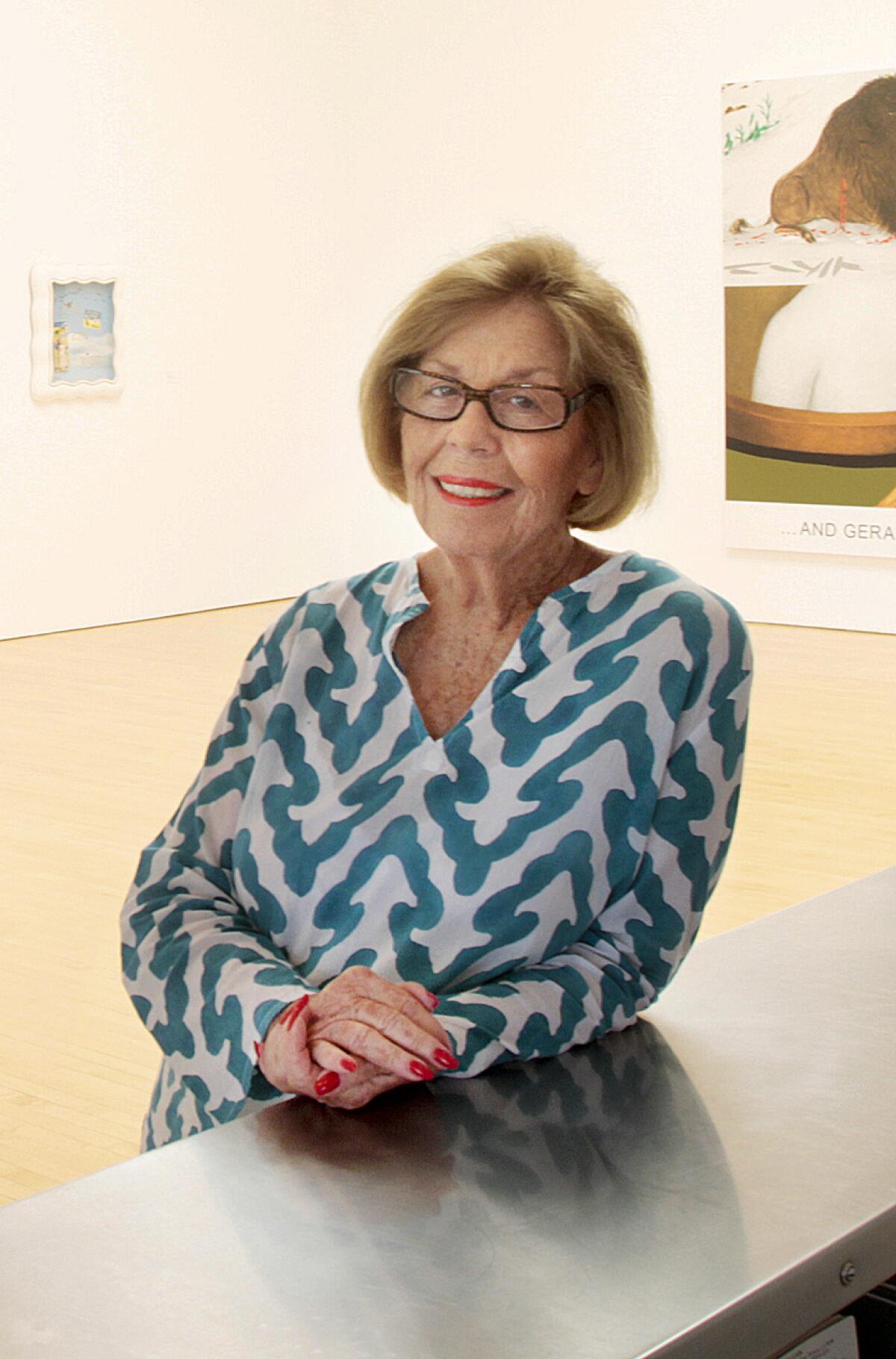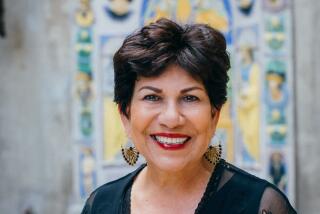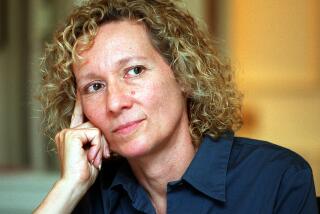Margo Leavin, champion of L.A. artists and major donor to UCLA, dies at 85

Margo Leavin, a prominent fixture of the Los Angeles art world whose West Hollywood gallery hosted major international artists and promoted the city’s burgeoning roster of artists for more than four decades, has died.
Leavin had been in ill health for some time. The cause of death, confirmed by longtime business partner Wendy Brandow, was not identified. She was 85.
In 2019, UCLA unveiled the Margo Leavin Graduate Art Studios in Culver City, a state-of-the-art facility for what was at the time the nation’s No. 2 graduate art school, according to U.S. News and World Report, whose latest ranking lifted UCLA to No. 1. The studios were made possible by a $20-million gift from the art dealer — the largest donation ever made by an alumna to the arts within the University of California system.
Friends and associates recalled not only her philanthropy but also her legacy as an art dealer.
“Margo was a tough business person, but she was never unfair. She always dealt with high integrity, and that built a community respect for her,” said Brandow, who began working with Leavin in 1975 and described a professional relationship that developed into a deep friendship.
Brandow said Leavin began her career as a social worker and then moved into advertising before deciding to open a gallery.
“Her passion was always about helping,” Brandow said, adding that although Leavin spent long hours in museums when she was growing up in New York, she didn’t originally consider art as a profession. She did, however, begin dabbling in the business by selling prints out of her apartment in West Hollywood.
It was only after a neighbor complained to the city that Leavin was improperly operating a business out of her home that she considered opening a gallery.
That she was reported was a bit extreme, Brandow said, because at that point, Leavin was making very limited sales.
“It was not a line around the block,” Brandow said.
The seeming bit of bad luck proved fortuitous, though, because it prompted Leavin to note designer Tony Duquette’s property in the neighborhood, and in 1970 she rented a small portion of the building that she eventually would buy.
Over the years, this Robertson Boulevard gallery expanded, eventually filling nearly half a city block to Hilldale Avenue. The Hilldale entrance led to a large space dedicated to exhibitions of sculpture. It was identifiable from the street by a large knife blade that seemed to be slicing the building in two, the handiwork of sculptor Claes Oldenburg.
From the beginning, Leavin staged exhibitions by significant Los Angeles artists including Ed Moses, Joe Goode, Tom Wudl and Billy Al Bengston. She quickly developed a reputation for her professionalism, and especially for her unwavering ethics and integrity.
“Margo Leavin was a conscientious and intelligent art dealer,” Bengston said by email. “I enjoyed showing with her, and all my business with her was honorable and good.”
Kathryn Kanjo, director and chief executive of the Museum of Contemporary Art San Diego, also spoke of Leavin’s sense of fairness, as well as her commitment to mounting exceptional shows with an eye for small but important details in presentation. In the mid-1980s, Kanjo was the Leavin gallery’s first and only intern, and she remembers that Leavin exuded authority and confidence.
“She didn’t wave it in front of you, though,” Kanjo said. “In some ways you didn’t notice that you were in the middle of a revolution because it was so smoothly executed.”
As a woman operating at such a high level in the late 20th century, Leavin also represented a world of possibilities.
“She opened doors, not just for artists but for women in the art world,” Kanjo said. “She showed me what could be.”
Early exhibitions of Pop art and Minimalism gave way to L.A. Conceptualism, which Leavin’s gallery helped elevate to international acclaim. Leavin developed close and lasting relationships with her artists, including Alexis Smith and John Baldessari.
“Margo was a foundational pillar of the Los Angeles art world,” wrote Hammer Museum director Ann Philbin. “Her groundbreaking gallery brought artists from all over the world to L.A. and artists from L.A. to the world. She was a force — uncompromising and rigorous, and she had a great eye. She cultivated the careers of artists from their earliest debuts and her loyalty to them was unmatched.”
Born in New York and educated as a young adult in Mexico, Leavin moved with her family to Los Angeles toward the end of high school. She later attended UCLA. She was fluent in Spanish and maintained a love for Mexico all her life.
Painter Lari Pittman remembered traveling throughout Mexico over the years with Leavin and Pittman’s husband, Roy Dowell, whom Leavin represented for 17 years. Leavin knew Mexico City well, Pittman said by email, and she loved engaging with street and market vendors by asking, “How’s your business doing?”
“At her excited urging in Oaxaca, we once entered a palapa with a long and rustic wooden bench, a rickety table with a bowl of fruit and a very old blender,” Pittman wrote, adding that Leavin ordered three smoothies but was more interested in hearing how the woman had started her business.
“It was always impressive in the way in which Margo addressed the vendors with warmth, humor and dignity,” Pittman said. “Margo earned and lived a grand life, but her early socialist education and upbringing was always informing her respect for humble mercantile endeavors.”
Kanjo remembers Leavin moved with quiet grace. She was dramatic, beautiful and stylish, Kanjo said. She was also curious and “respectful to humanity,” Kanjo added. “She cares, she wonders, she wants to understand.”
Until her retirement in 2013, Leavin represented a roster of Los Angeles artists that also included Allen Ruppersberg and William Leavitt. Among more than 400 exhibitions, the gallery also mounted major solo shows of work by Jasper Johns, Andy Warhol, Ad Reinhardt, Sol LeWitt and other New York artists.
In 2015, the gallery’s archive was acquired by the Getty Research Institute.
More to Read
The biggest entertainment stories
Get our big stories about Hollywood, film, television, music, arts, culture and more right in your inbox as soon as they publish.
You may occasionally receive promotional content from the Los Angeles Times.








